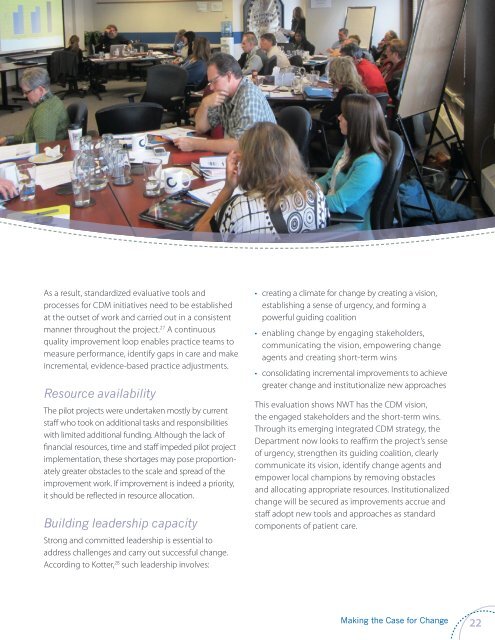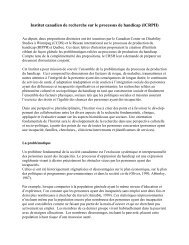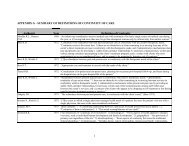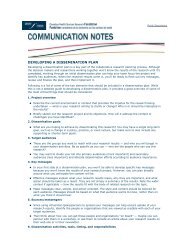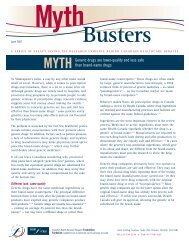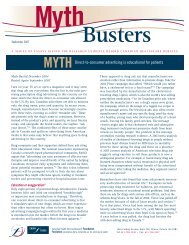Full Report
Full Report
Full Report
Create successful ePaper yourself
Turn your PDF publications into a flip-book with our unique Google optimized e-Paper software.
As a result, standardized evaluative tools and<br />
processes for CDM initiatives need to be established<br />
at the outset of work and carried out in a consistent<br />
manner throughout the project. 27 A continuous<br />
quality improvement loop enables practice teams to<br />
measure performance, identify gaps in care and make<br />
incremental, evidence-based practice adjustments.<br />
Resource availability<br />
The pilot projects were undertaken mostly by current<br />
staff who took on additional tasks and responsibilities<br />
with limited additional funding. Although the lack of<br />
financial resources, time and staff impeded pilot project<br />
implementation, these shortages may pose proportionately<br />
greater obstacles to the scale and spread of the<br />
improvement work. If improvement is indeed a priority,<br />
it should be reflected in resource allocation.<br />
Building leadership capacity<br />
Strong and committed leadership is essential to<br />
address challenges and carry out successful change.<br />
According to Kotter, 28 such leadership involves:<br />
• creating a climate for change by creating a vision,<br />
establishing a sense of urgency, and forming a<br />
powerful guiding coalition<br />
• enabling change by engaging stakeholders,<br />
communicating the vision, empowering change<br />
agents and creating short-term wins<br />
• consolidating incremental improvements to achieve<br />
greater change and institutionalize new approaches<br />
This evaluation shows NWT has the CDM vision,<br />
the engaged stakeholders and the short-term wins.<br />
Through its emerging integrated CDM strategy, the<br />
Department now looks to reaffirm the project’s sense<br />
of urgency, strengthen its guiding coalition, clearly<br />
communicate its vision, identify change agents and<br />
empower local champions by removing obstacles<br />
and allocating appropriate resources. Institutionalized<br />
change will be secured as improvements accrue and<br />
staff adopt new tools and approaches as standard<br />
components of patient care.<br />
Making the Case for Change<br />
22


